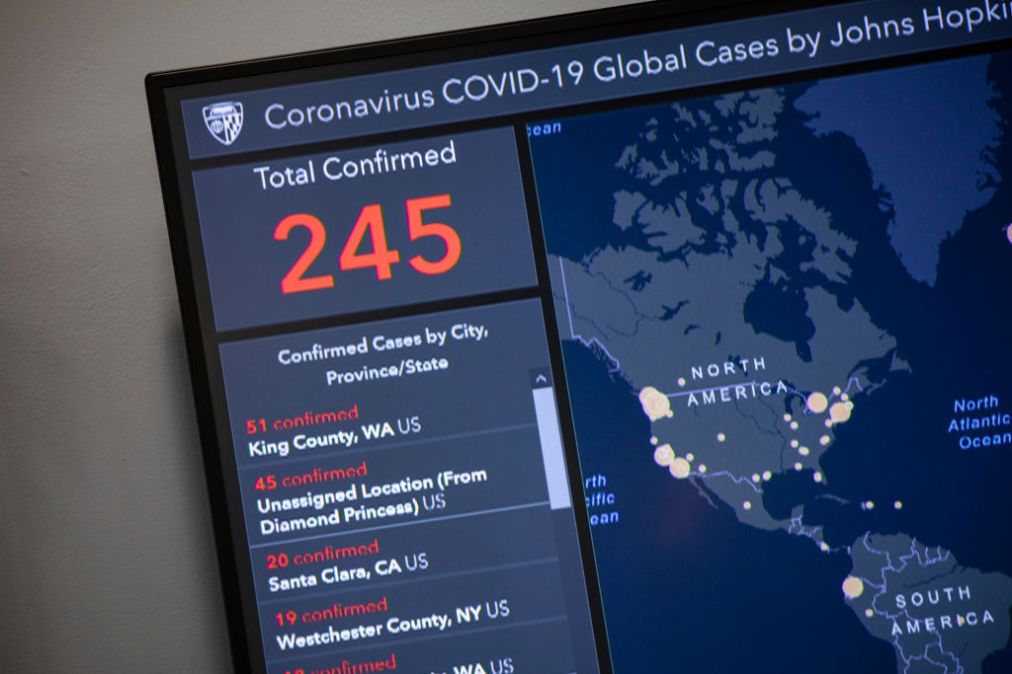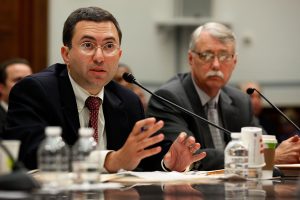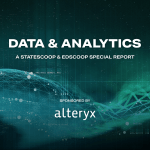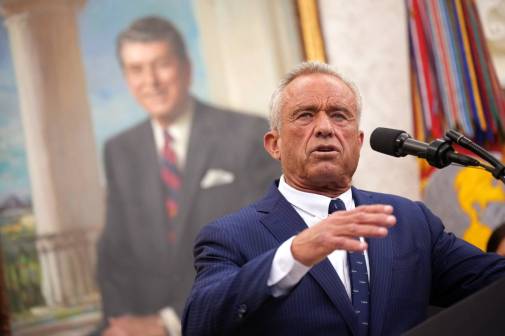The pandemic made open data bigger than ever. But it’s still pretty messy.

As the coronavirus pandemic unfolded in the United States last March, many governors, mayors, health directors and other officials promptly armed themselves with whatever numbers they could scrounge up about testing, hospitalizations and fatalities.
Daily press conferences became appointment viewing for locked-down populations who turned to briefings from the likes of New York Gov. Andrew Cuomo, whose neatly designed slideshows later earned him an Emmy, or Ohio Gov. Mike DeWine, whose daily appearances were dubbed “wine with DeWine.”
Yet as continuous broadcasting of the latest COVID-19 data raised a nation of armchair epidemiologists, problems quickly began to show in the figures and types of information being reported, exposing the need for state governments to beef up their data-collection and -sharing efforts to manage their ways through the health crisis.
Almost one year later, every state has expanded its coronavirus data offerings, but the efforts in many places remain incomplete, and incongruous across state lines, even as the United States ramps up a mass vaccination effort. Data and public health experts say the faults stem from several issues, including a lack of data related to race and ethnicity, elected officials politicizing the numbers and an absence of any national standards.
Just as the demands of remote work and digital government have raised the profile of state IT, the ongoing need for accurate information has heightened the role of data operations.
From a few to 50
Before the pandemic, “most governors weren’t discussing data,” said Tyler Kleykamp, a former chief data officer for the State of Connecticut. And if they were, he said, it tended to be related to issues like criminal justice or opioid addictions. COVID-19 flipped a switch.

Tyler Kleykamp
“Soon, every governor was having a daily press conference using data,” said Kleykamp, who now leads the State Chief Data Officers Network, a think tank for government data leaders based out of Georgetown University.
And as elected leaders were giving daily rundowns of the latest grim news, traffic to states’ open-data sites surged. Kleykamp said many states’ data portals got more users last April than they recorded annually.
As the crisis continued to grow, so did what types of data that needed to be collected, catalogued and shared. Initially, Kleykamp said, most states focused on testing and hospital capacity, with health departments taking the lead. As relief like extended unemployment insurance and nutrition assistance kicked in, though, data officers got much more involved as data related to those programs had to be integrated between agencies across the state governments.
Kleykamp said states that already had robust data-sharing policies in place, such as Indiana and North Carolina, were able to move quicker than others.
‘We miss important aspects’
But it also didn’t take long for cracks to emerge, especially with regard to coronavirus testing, for which every state, hospital and private laboratory had different sets of standard, with very little guidance from the federal government. Dr. Joshua Sharfstein, the vice dean for public health and community engagement at the Johns Hopkins University Bloomberg School of Public Health, told StateScoop that lack of oversight, which could’ve given officials more “consistency and timeliness of core measures” has been very frustrating.
“In terms of data, one of the major challenges has been that there haven’t been national standards,” he said.

Dr. Joshua Sharfstein (Chip Somodevilla / Getty Images)
Sharfstein, who is also a former Maryland health secretary and deputy commissioner of the U.S. Food and Drug Administration, said states have been very inconsistent in tracking data that could greatly help the response to COVID-19, especially with regard to race and ethnicity when the illness is known to disproportionately affect Black and Hispanic individuals.
Bad data, he said, has bad consequences.
“We don’t appreciate the full extent of what’s happening. We don’t see what’s working, what’s not working. We miss important aspects of the crisis.”
There have been several high-profile, third-party efforts to create nationwide COVID-19 data banks. But Sharfstein said those projects, including one developed at Johns Hopkins, have to fit together state data sets that don’t always match up. And others, like the COVID Tracking Project led by journalists at the Atlantic, manually update numbers by visiting state websites daily.
Still, resources like the Johns Hopkins portal and COVID Tracking Project have been boons for the public’s understanding of pandemic-related data, Kleykamp said, as have many of the dashboards that states have created to present top-line numbers more digestible to everyday residents.
“I think you had people with the skillset to work with raw data, now you have a whole audience of interested individuals who aren’t data scientists or techies by background,” he said. “The term of art is human and machine readable.”
While organizations like Johns Hopkins and the COVID Tracking Project aggregate data from a variety of sources and offer deep dives, state dashboards, he said, offer a “10,000-foot overview.”
“It reinforces as we’re sharing information with the public, you’ve got to meet the needs of different users and make sure it’s not just open data or dashboards, it has to be both,” he said.
Data frequently politicized
But the proliferation of data and analytics related to the pandemic has also been peppered by allegations of political interference since the crisis’ early days, with some numbers being hidden from the public and data officials landing in feuds with government leaders.
Last May, when the coronavirus was visibly ripping through meatpacking plants in northwestern Iowa, sickening thousands of workers, Gov. Kim Reynolds’ administration set a policy that outbreaks at meatpacking plants and other businesses would only be disclosed if specifically asked by members of the media.
More recently, Cuomo has faced accusations that New York downplayed the pandemic’s impact on the state’s nursing homes, with Attorney General Letitia James releasing a report last month that added more than 3,800 to the number of deaths that occurred in non-hospital care facilities. The governor’s top aide reportedly told state lawmakers the undercount was made to avoid scrutiny last summer by the Trump administration.
In Florida, Gov. Ron DeSantis has been locked in a personal war with Rebekah Jones, a former data scientist for the state Department of Health who was fired last May from her job managing its COVID-19 data portal when she said she had been asked to manually alter data to support the governor’s aim to re-open bars, restaurants and other public venues.
The spat with Jones, who later launched an independent dashboard, culminated last December when police raided her home on a suspicion that she made “unauthorized access” to a state data system; she turned herself in for arrest in January.
Taken together, these incidents can further shake the public’s trust, Kleykamp said.
“The way I look at this is that governors and people working within state government, they have at least an ethical responsibility to report out on the numbers accurately,” he said.
‘Other things to do’
While the amount of overall data about COVID-19 continues to grow, including the incorporation of vaccinations into states’ dashboards, many of the problems that were identified early in the crisis linger. According to a Centers for Disease Control and Prevention report published Feb. 5, race and ethnicity data was only available for 52% of people who’ve been vaccinated since December.
“It’s very frustrating,” said Sharfstein, the Johns Hopkins vice dean. “I think there was a reluctance to set even some very basic standards in the prior administration.”
The 198-page pandemic response plan the Biden administration put out last month places a heavy emphasis on data collection and standardization, including helping state, local, tribal and territorial governments build more transparent and interoperable platforms. The White House also wants agencies to collect more data related to race, ethnicity, geography and disability.
Kleykamp said that while harmonization of data standards and help building more compatible systems will be welcome, direct investment to the states could be better.
“COVID is sort of everyone’s full-time job now in state government,” he said. “And governments have to do other things than just respond to the pandemic. Some degree of funding would not only useful for now, but as we move into recovery. There’s going to be a need to help get people back to work.”
This piece is part of StateScoop’s Special Report on Data & Analytics.

This story was featured in StateScoop Special Report: Data and Analytics (2021)






